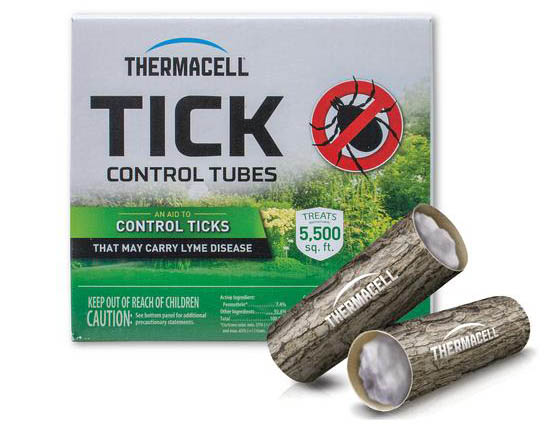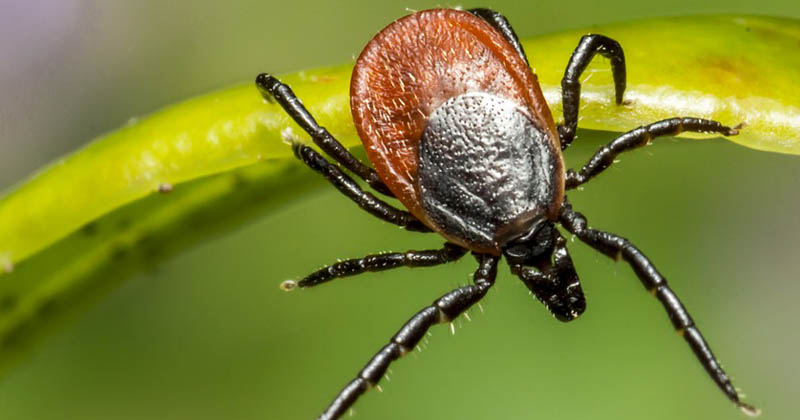If you are having issues with ticks in your yard and don’t want to douse it in chemical sprays, an alternative is to use tick tubes. Here’s how tick tubes work, whether they are worth your money, and what you need to know about DIY tick tubes.
What Are Tick Tubes?
Tick tubes contain cotton which has been soaked in the pesticide permethrin. Permethrin is incredibly effective at killing ticks. Hikers often spray permethrin their boots, socks and clothes to prevent ticks while hiking (more on permethrin clothing here).
Many State and National Parks now use permethrin tick tubes in effort to control ticks and prevent disease. This includes parks and public lands in NY State. (Source)
How Do Tick Tubes Prevent Ticks?
The pesticide in tick tubes don’t directly kill ticks. Rather, the idea is that mice will use the permethrin-treated cotton in the tubes to make their nests. The permethrin will then kill ticks which get on the mice.
Mice are one of the main food sources for ticks, especially in their nymph stages. By killing the ticks which feed on mice in your yard, you greatly reduce the number of ticks. The reduction in ticks is seen even in subsequent seasons.

Do Tick Tubes Work?
There is a good amount of evidence showing that tick tubes are effective at reducing the number of ticks. Some studies showed the tubes reduced ticks by 50% or more. However, there are also studies which found that tick tubes had no effective on the number of ticks. (Sources: 1, 2, 3, 4)
There are two key reasons for the varying results. First, it has to do with where tick tubes are used. Studies show tick tubes are most effective when used on large properties vs. small residential properties. This makes sense considering that large properties would have more mice habitat.
The other issue is whether the mice would actually find the cotton and bring it back to their nests. There’s no way to guarantee they will do this. However, mice are incredibly attracted to cotton. They like cotton so much that cotton is even considered one of the best baits for a mouse trap.
*Even if you use tick tubes, you should still utilize natural methods of controlling ticks in your yard. These include methods like keeping grass mowed and putting up perimeters. Click the image below to see full-screen.
Tick Tubes vs. Tick Yard prays
Pesticide sprays claim to be safe when applied properly, but there are still a lot of risks, like breathing in the spray while applying it or having your pet ingest the pesticide after eating plants coated in it. Tick sprays are also very bad for the environment: the pesticides get into the groundwater and can kill aquatic life. It can kill helpful insects like bees and ladybugs, which are desperately needed for pollination and controlling other pests.
As for natural tick yard sprays, they simply don’t work well. Most of the hyped-up claims aren’t backed by any science. And even those natural sprays can be very dangerous to your pets, especially if they contain ingredients like clove or cinnamon. Read more about this in my post on essential oils for ticks.
Are Tick Tubes Worth It?
Considering the huge environmental and health risks that come with chemical tick sprays, tick tubes are worth trying. And, considering how dangerous tick-borne diseases are, it’s certainly better than doing nothing. Even though tick tubes do contain a chemical, it is targeted directly at the ticks on mice so doesn’t have to be sprayed all over your yard. Once dry, permethrin sticks to fibers so it won’t get into the groundwater like a spray will.
How to Set Tick Tubes:
- Put out tick tubes at the start of tick season (usually April) and against in July/August
- Use approximately 6 tubes per 1/4 acre of mouse habitat
- Leave a maximum of 10 yards between tubes
- Choose areas where mice are likely to go, such as in tall grass or near burrows
DIY Tick Tubes
In theory, you could easily make your own tick tubes by spraying cotton balls with the permethrin and stuffing it into a cardboard tube.
But it is illegal to use pesticides in any way other than indicated on the label. Thus, it is actually illegal to make your own tick tubes.
Further, as Cornell University warns here, tick tubes are formulated to be effective against mice. DIY permethrin tick tubes won’t work as well and could harm other animals.
Be responsible: spend the extra money for safe, legal tick tubes instead of trying to make your own.
Where to Buy Tick Tubes

Right now, the only brand that I’m aware of selling tick tubes for residential use is Thermacell. Their tick tubes come in packs of 6, 24, 120, or 244. You can get them here at Amazon.
Stay safe against ticks. Read:
- Best Tick Removal Tools for Humans
- How to Remove a Tick Head Stuck in Your Skin
- Natural Ways to Prevent Tick Bites
Additional Resources:
https://tickencounter.org/faq/tick_bite_prevention
https://nysipm.cornell.edu/whats-bugging-you/ticks/tick-faqs/#natural-products
Image credits:
“Peca” (CC BY-NC-SA 2.0) by PeroMHC
“Minimize ticks in your yard” (CC BY-NC 2.0) by The NYSIPM Image Gallery














1 Comment
Delia
April 30, 2024 at 3:50 amI read a study where they applied peanut butter to an end of the tick tube. They had cameras up and found that mice were more attracted to the tubes with PB (obviously!). I have been doing that this year, and it has definitely attracted something. I don’t have cameras, but every day the peanut butter is gone and the cotton is out of the tube. If some of it is being carried to nests, I can’t say. I am very eager to try this during the later application, as then mice will be preparing warmer nests for winter (so the study said). For this season, I’m going to keep adding PB and stuffing the cotton back in. For a while, at least.